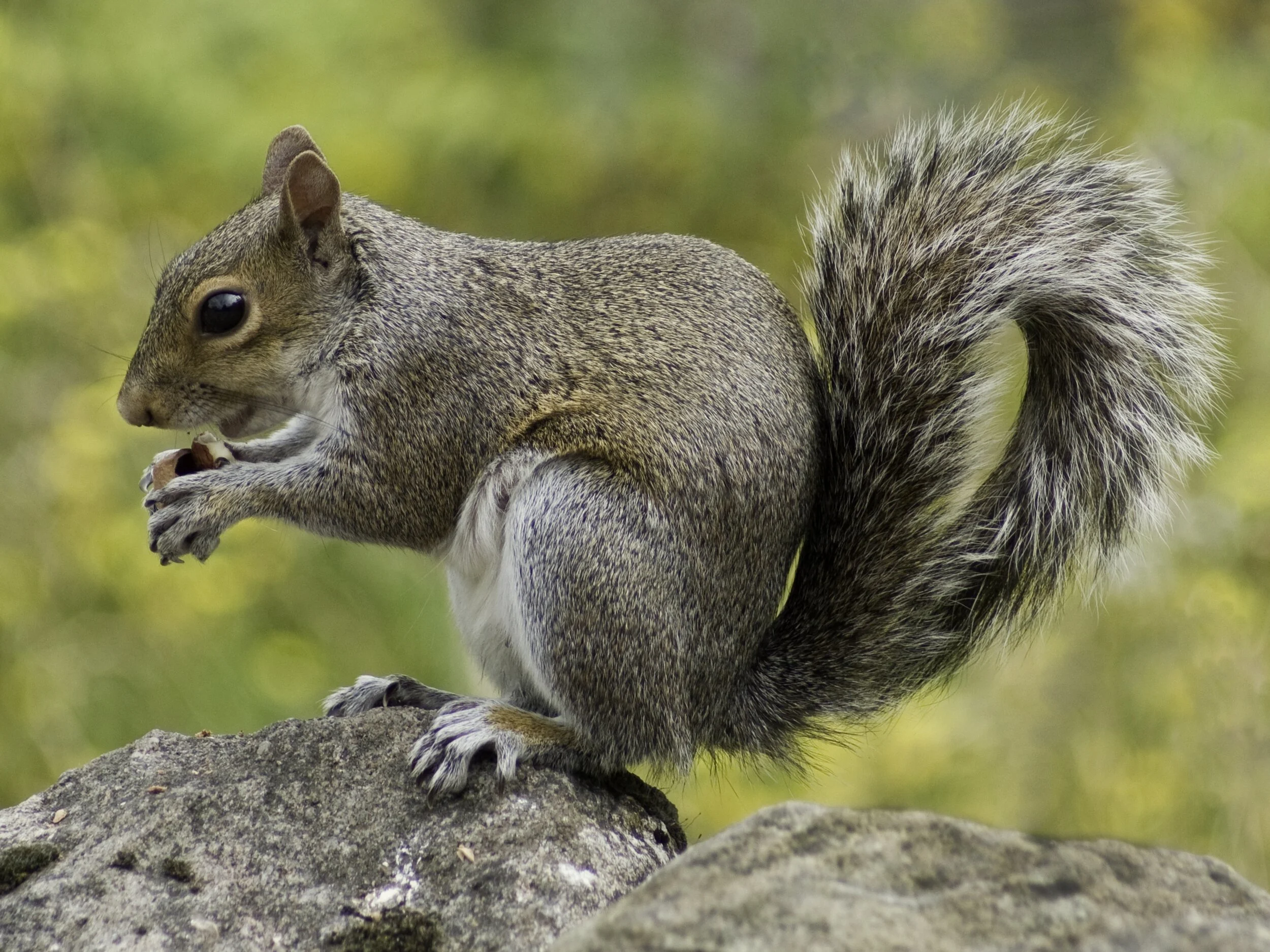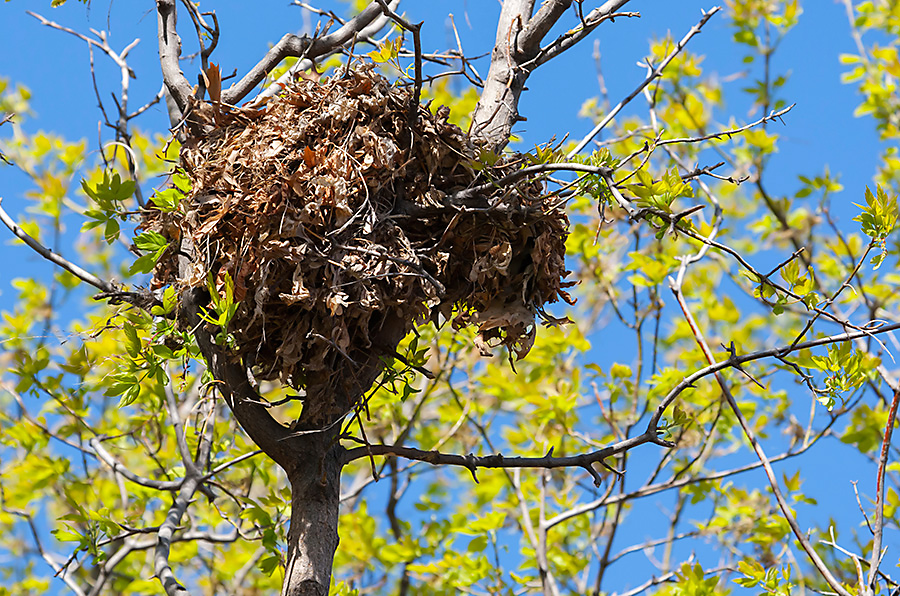Eastern Grey Squirrel (Sciurus carolinensis)
Squirrel Biology
The eastern gray squirrel has predominantly gray fur, but it can have a brownish/black color. They range between 15-20 inches in length (nose to tail), and the adult weight varies between 14 and 21 ounces.Eastern gray squirrels can breed twice a year, but younger and less experienced mothers normally have a single litter per year in the spring. Normally, one to four young are born in each litter, but the largest possible litter size is eight.
Squirrel Behavior
The eastern gray squirrel is a scatter-hoarder; it hoards food in numerous small caches for later recovery. Eastern gray squirrels build a type of nest in the forks of trees, consisting mainly of dry leaves and twigs. Eastern gray squirrels are crepuscular, or more active during the early and late hours of the day, and tend to avoid the heat in the middle of a summer day. They do not hibernate.
Squirrel Concerns
The most common problem associated with gray squirrels is their ability to take up residence in people’s homes. They associate holes in eaves, soffits and roofs with a tree cavity, their natural nests, and move right in. Once inside, they consider it theirs, and they can be very difficult to get rid of.Gray squirrels will tear up insulation in an attic and use it to make a nest. They will also chew through electrical lines.
Squirrel Control
Prevention is key to keeping gray squirrels, or any other animal, from taking up residence in your home or building. Keep trees and overhanging branches away from your structure. Make sure all parts of the exterior of your building are maintained, and repair any rotted or damaged areas of eaves and soffits. If squirrels do get into your home, a thorough inspection of how they are entering and exiting, followed by a structure trapping and exclusion protocol are necessary.




